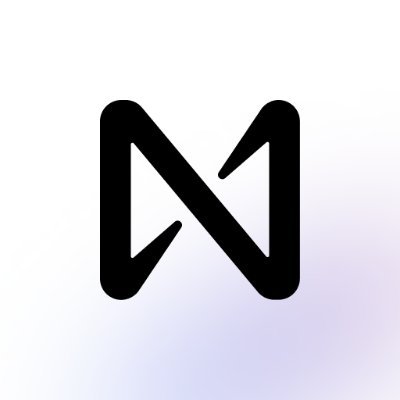Chain abstraction: The prism in the multi-chain era
Author: 0XNATALIE, ChainFeeds
As a key entry point to the Crypto/Web3 ecosystem, wallets have always been the focus of competition among entrepreneurial teams. In addition to wallet products that support new public chains, many teams hope to significantly improve the experience of MetaMask (such as Rabby). While wallet teams focus on account abstraction, the higher-dimensional concept of Chain Abstraction is gradually gaining attention in the community. As a key entry point to the Crypto/Web3 ecosystem, wallets have always been the focus of competition among entrepreneurial teams.
NEAR co-founder Illia Polosukhin recently wrote about the concept of chain abstraction and expressed NEAR's vision for achieving it. Additionally, projects like ZetaChain, which launched its mainnet last month, upgraded L1, modular L1 Particle Network, full-chain ledgers, and Cycle Network are all exploring ways to achieve chain abstraction.
Why is Chain Abstraction Important?
Consider this question: why is the user experience and user count of Web3 products far lower than that of Web2? One important reason is that many current projects require users to understand various principles and concepts. The rapid development of Web3 is evident to all, with new narratives and concepts emerging constantly, leading even seasoned Web3 players to feel that "the pace of change is too fast and learning is too cumbersome."
For example, cross-chain bridge protocols first require users to understand that assets cannot be interchanged between different chains, which is why such bridging protocols are needed to facilitate asset transfers. Furthermore, users must realize that to transfer assets from Ethereum to Solana, they need to pay ETH as gas fees, not SOL. Why is it so complicated just to use 100 USDT on Ethereum to buy an NFT in the Solana ecosystem?
In contrast, Web2 products are almost all packaged, where users know the principles but are unaware of the underlying collaborations. According to the logic of Web2 product experience, if I want to buy an NFT in the Solana ecosystem, I simply log into my wallet on the NFT project's interface, use my 100 USDT to make the purchase, and all I need to know is how much is left in my wallet and whether the NFT has arrived.
Chain abstraction abstracts the differences and complexities between different blockchains into a unified interface, allowing users and developers to interact and operate seamlessly across different chains. The goal is to make users unaware of the existence of chains while enjoying the benefits brought by blockchain centralization, combined with the intention of decentralization, resulting in a smoother user experience. Imagine a scenario where users only need to hold sufficient assets, regardless of the tokens or chains, and can trade as they wish, setting transaction timing and conditions while ensuring that transactions are secure, private, and fully under their control.

Gradual Implementation of Chain Abstraction
In the current multi-chain environment, not only has the user experience become complex, but liquidity is also fragmented, hindering the large-scale adoption of blockchain technology. An effective way to integrate liquidity is to establish an independent platform that provides a unified interface for interactive operations, namely a platform that achieves chain abstraction.
Particle Network is such an L1 that provides an SDK for implementing chain abstraction. It abstracts accounts, gas, and liquidity, creating an open network access layer behind dapps that users are unaware of:
Universal Accounts: Users can use the same account to transact and operate across different chains. The parent contract controls AA accounts across more than 50 chains, linking account addresses to make transactions faster and cross-chain transfers quicker (within 5 seconds). This also means more application scenarios can be unlocked, such as full-chain stablecoins.
Universal Gas Token: The introduction of a universal gas token (SPARTI) allows users to pay transaction fees across different chains without needing to hold specific gas tokens for each chain, reducing the cost and complexity of cross-chain transactions. Additionally, Particle Network integrates EigenLayer, enhancing network security through dual staking of SPARTI tokens and Ethereum.
Universal Liquidity: By implementing liquidity abstraction, liquidity from different chains is aggregated. For example, using USDT to purchase BTC within the Bitcoin ecosystem. Particle Network acts as a liquidity aggregation protocol, supporting cross-chain atomic transaction execution.
The underlying architecture of Particle Network utilizes the Cosmos SDK and ensures network security through the CometBFT consensus engine. This different underlying architecture allows Particle Network to flexibly scale and customize to meet the needs of various application scenarios. Furthermore, Particle Network employs aggregated DA, which does not rely on third parties (such as Celestia or EigenDA), enhancing data availability by storing copies of data in multiple locations.
Chain Abstraction Prepares for Application Explosion
The era of multi-chain also signifies an era of multi-layer nesting. In this context, chain abstraction acts like a prism, unifying multiple chains, addressing issues such as high entry barriers and user education difficulties, and avoiding the need for users to manage multiple accounts, switch networks, and deal with transaction fees that affect their experience. As more projects and technical teams join the construction of chain abstraction, we look forward to it becoming a key driving force in advancing the Web3 ecosystem, bringing a more unified, convenient, and secure user experience, and promoting the process of mainstream adoption.














